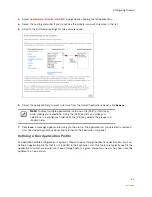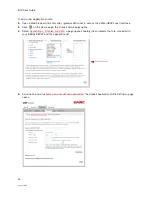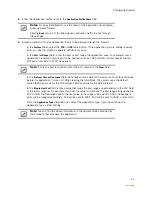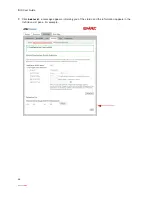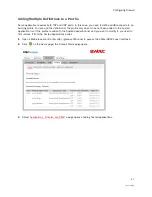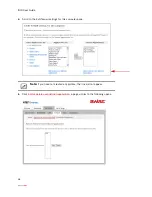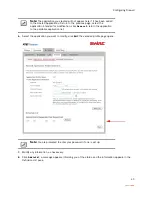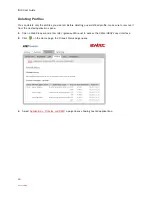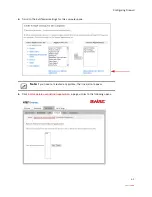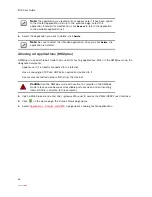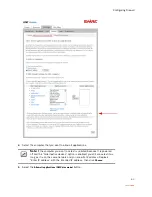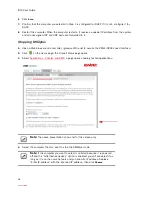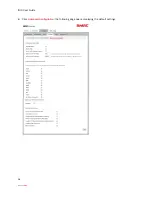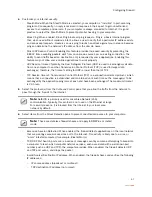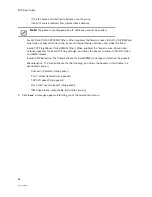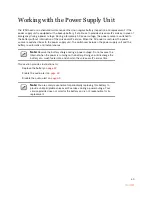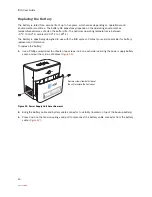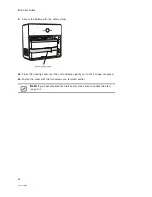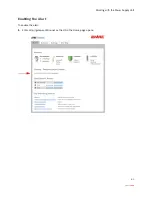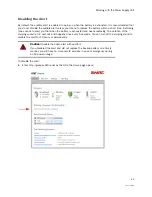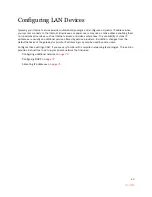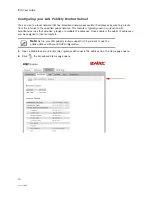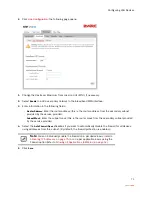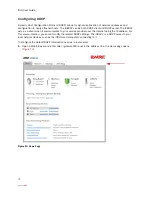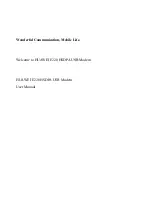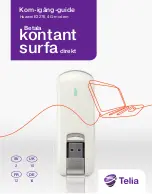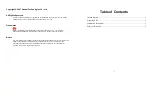
Configuring Firewall
57
4.
Customize your Internet security.
−
Stealth Mode
: When the Stealth Mode is selected, your computer is “invisible” to port-scanning
programs. Consequently, no reply is received in response in their quest to gain unauthorized
access to computers and servers. If your computer is always connected to Internet, it is good
practice to select the Stealth Mode to prevent potential hacking to your computer.
−
Block Ping
: When enabled, Block Ping blocks all ping requests. Ping is a basic Internet program
that, when used without malicious intent, allows a user to verify that a particular IP address exists
and can accept requests. Hackers can use ping to launch an attack against your network, because
ping can determine the network’s IP address from the domain name.
−
Strict UDP Session Control
: Enabling this feature provides increased security by preventing the
i3802V from accepting packets sent from an unknown source over an existing connection. The
ability to send traffic based on destination only is required by some applications. Enabling this
feature may not allow some on-line applications to work properly.
−
UDP Session Timeout
: Typically, the User Datagram Protocol (UDP) is used to exchange small data
from one computer to another. Transmission Control Protocol (TCP) is used for larger data
exchanges; therefore, the timeout setting for UDP is lower than that of TCP.
−
TCP Session Timeout
: Transmission Control Protocol (TCP) is a connection-oriented protocol, which
means that a connection is established and maintained until such time as the message(s) to be
exchanged by the application programs at each end have been exchanged. The maximum timeout
is 24 hours.
5.
Select the protocol(s) from the
Outbound Control
pane that you allow the traffic from the network to
pass through the firewall to the Internet.
6.
Select items from the
Attack Detection
pane to prevent unauthorized access to your computers.
−
Excessive Session Detection: When enabled, the firewall detects applications on the local network
that are creating excessive sessions out to the Internet. This activity is likely due to a virus or
“worm” infected computer (for example, Blaster Worm).
−
TCP/UDP Port Scan: A port scan is a series of messages sent by someone attempting to break into
a computer to learn which computer network services, each associated with a well-known port
number (such as UDP and TCP), the computer provides. When enabled, the firewall detects UDP
and TCP port scans, and drops the packet.
−
Invalid Source/Destination IP address. When enabled, the firewall checks and verifies the following
IP addresses:
−
IP source address (broadcast or multicast)
−
TCP destination IP address (not unicast)
Note:
NetBIOS is primarily used for Local Area Network (LAN)
communication. Typically, this protocol is not used on the Ethernet at large.
For security reasons, it is blocked from the Internet to your local area
network by default.
Note:
These are stateless firewall checks and apply to DMZPlus or routed
mode.
Summary of Contents for i38HG
Page 1: ...Release 1 0 iNID User Guide ...
Page 12: ...iNID User Guide 8 ...
Page 26: ...iNID User Guide 22 ...
Page 42: ...iNID User Guide 38 ...
Page 72: ...iNID User Guide 68 ...
Page 82: ...iNID User Guide 78 ...
Page 104: ...iNID User Guide 100 ...
Page 108: ...iNID User Guide 104 ...

